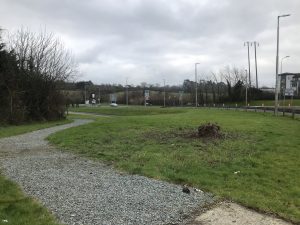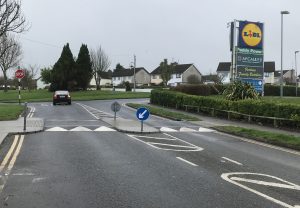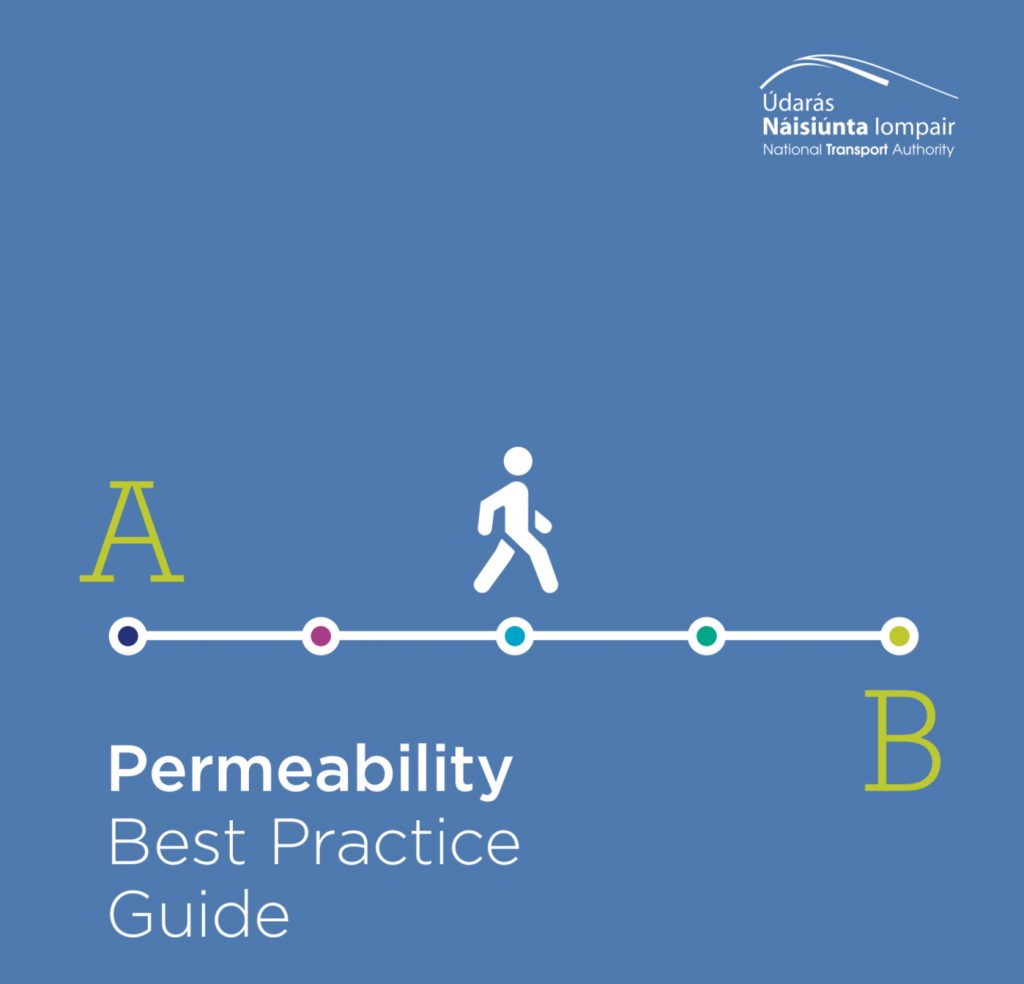
There are many mentions of the word ‘permeability’ in the new draft county development plan.
But what is permeability and why is it important when it comes to everyday cycling?
The NTA has a whole document on this subject which you can find at this link but in a nutshell this is how this document defines it:
Competitive Advantage
‘Permeability, for the purpose of this guidance, describes the extent to which an urban area permits the movement of people by walking or cycling. It does not relate to the movement of motorised vehicles and is therefore concerned with providing a competitive advantage to walking and cycling over these modes. Such an approach is known as “filtered permeability” and it is this concept with which this document is concerned’.
Basically in order to encourage everyday transport cycling, long circuitous journeys around one way streets designed for cars, can be off-putting for a person who just wants to get from A-B in the shortest time possible by bike. Opportunities should therefore be sought out in order to provide a ‘competitive advantage’ in order to encourage this mode.
In this blog I’m going to take a look at two potential filtered permeability solutions in Wexford Town, where a cyclist’s journey could be made safer and more convenient, that would have little if any impact on other road users.
1. Contra-Flow.
Contra-flow cycling is when cyclists are allowed to ride against the flow of one-way streets. This is a simple regulatory measure and highly attractive for cyclists. It creates shortcuts away from busier traffic.
It has proven to be safe, even in the narrowest streets, when speeds are low and traffic quiet.
We live in a medieval town that has many narrow streets that are not wide enough for two cars passing in opposite directions.
Of course that’s not to say that some of these streets couldn’t accommodate the space required by a cyclist rather than that needed by a car going in the opposite direction.
It would seem rather shortsighted that contra flow cycle lanes (examples here) is not a solution that has been offered on any of Wexford’s streets to date.
For this example, I’m going to look at a journey from my favourite pub in town in the Faythe called The Swan and I’m going to travel to Wexford Garda Station by bicycle.
As the crow flies, this is a short distance but the one way system makes this journey much longer for cars and ergo bikes in the absence of a contraflow cycle lane.
My journey here would involve a short cycle down the Faythe where I enter this one way system.
I have a choice here.
I either dismount and cross the road to the footpath and walk down one way street at the Folly to the roundabout and cross the road again or I can cycle the long circuitous route around the one way system on to the busy King St where I will probably need to wait for the lights to change before continuing my journey to the garda station.
Instead if the one way street at the Folly contained a contra flow cycle lane even for this short section (pictures in yellow below), this would be a simple left turn straight on to my destination.
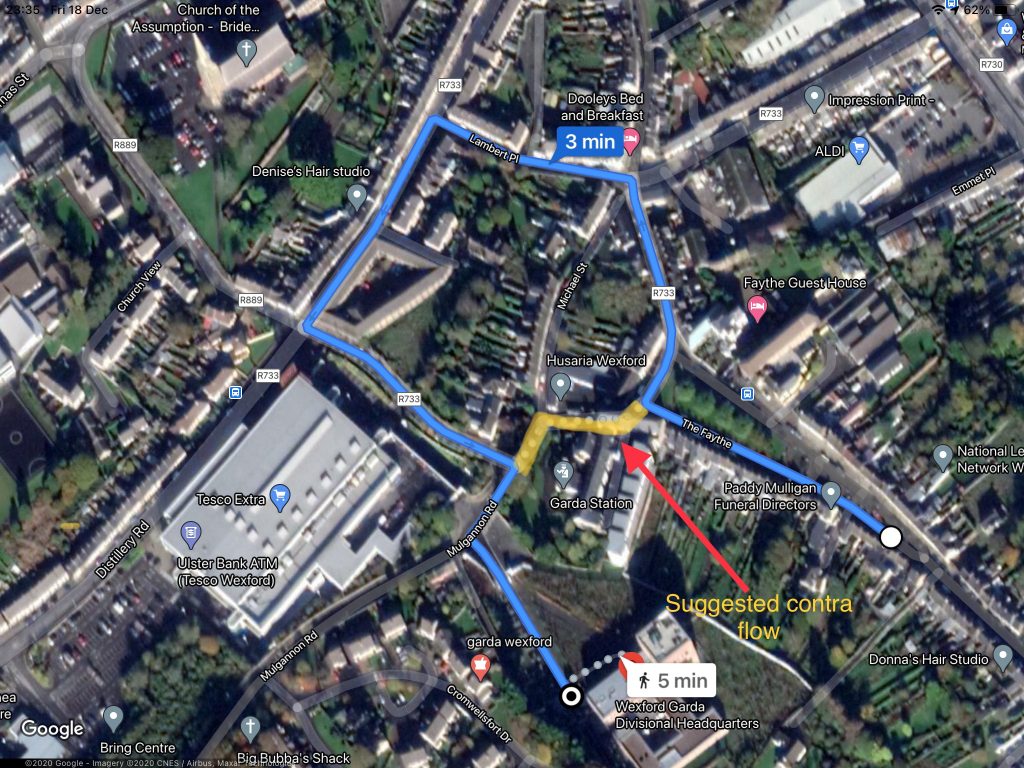
The simple fact of creating conditions to enable active travel transport cycling, involves enticing a car driver to make decisions usually based on safety and convenience.
Experience from cycling friendly countries would suggest that the more of these situations that you create, the greater the chance of encouraging transport modal change to cycling.
This simple contra flow could improve both the safety and convenience at very little cost and at zero inconvenience to other road users.
Let’s take a look at another…
2. Bicycle accessible slipway.
Before Covid-19 struck, WexBUG were looking for a safe route that we could use to chaperone schoolchildren from Clonard via The Corish Pk area to the Green St schools and on to The Gaelscoil as part of a cycle bus initiative.
When we risk assessed different routes, we found that the most dangerous part of the journey involved the twisty downhill stretch that leads on to busy St. Aidan’s Rd junction.
It is heavily trafficked and dismounting was seen as the only safe option.
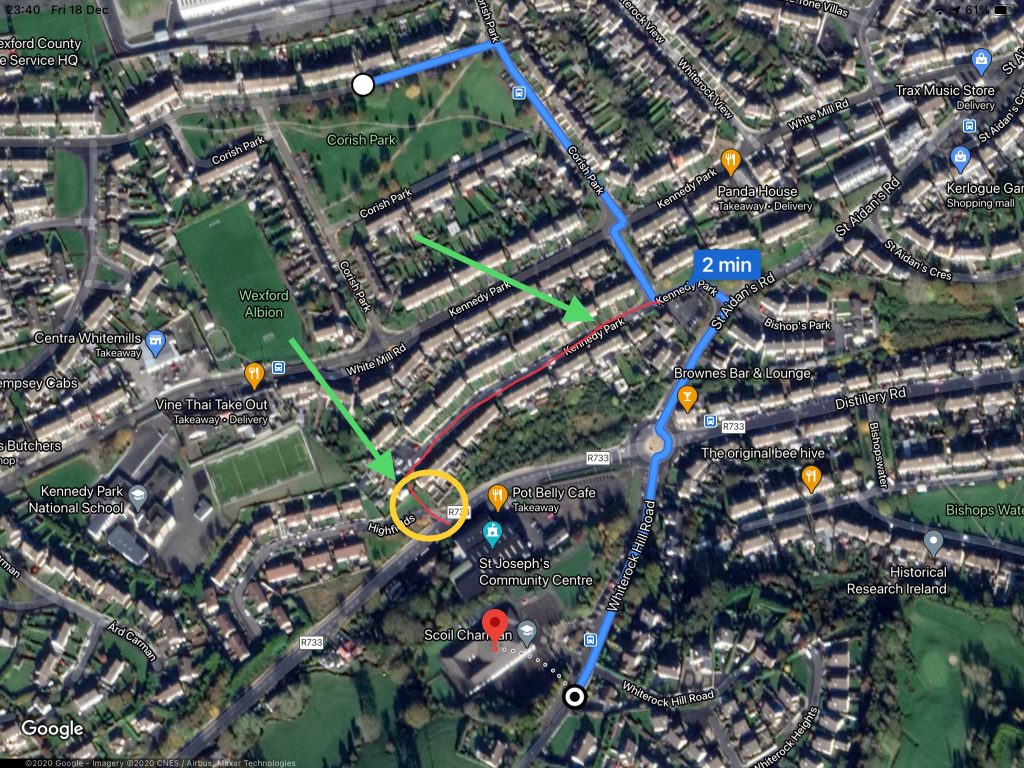
However we took a further look at permeability options and found a nice slipway leading from Kennedy Park estate on to the R733 just beside Highfields.
From here it’s a short distance to the Gaelscoil via some elevated and relatively safe crossings to access the school.
However this slipway involves steps which would prove problematic for a child with a heavy school bag.
The solution though is a rather simple one as the image below from Sunday’s Well in Cork suggests.
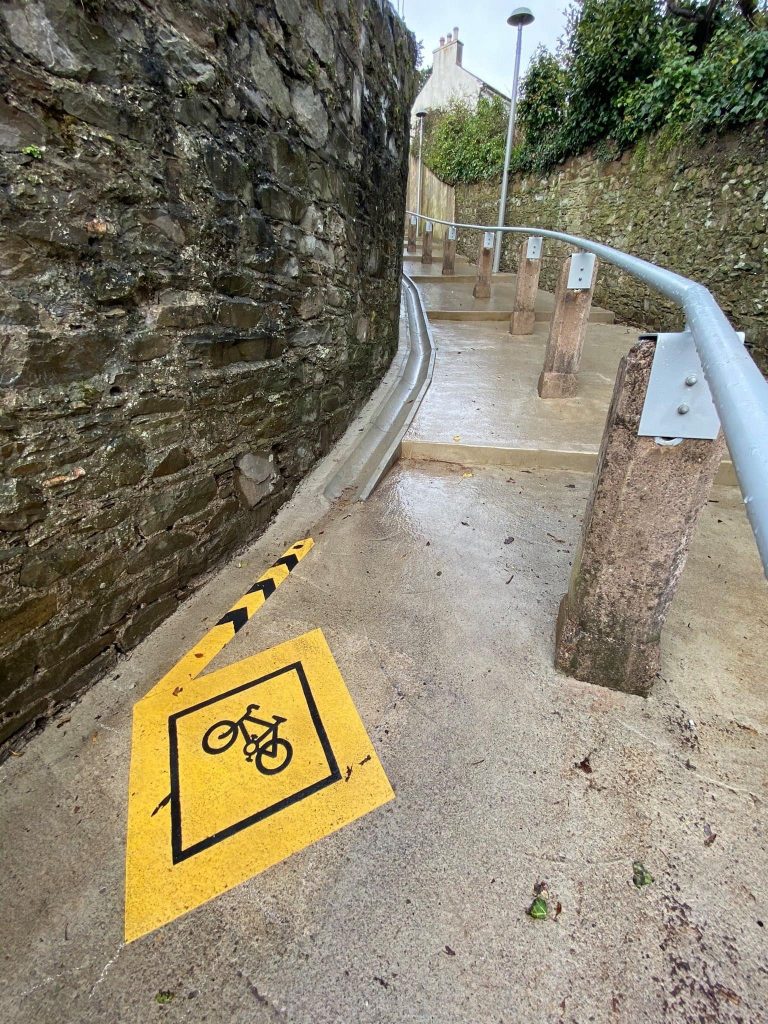
An option here would involve what Cork City council did recently in fitting an appropriately sloped gully at one side of the steps to Sunday’s Well which would make accessing this by bike much easier.
These are just 2 samples to initiate a discussion.
There may well be many other examples of quick fix permeability projects, that could help Wexford become a much more attractive option by bicycle.

